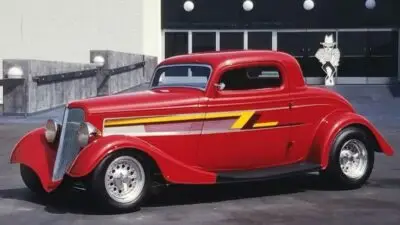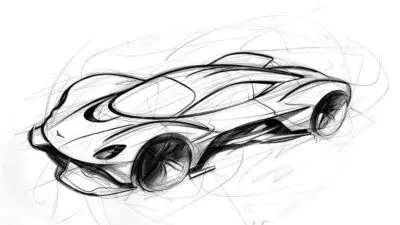The automotive world holds countless untold stories of secret car projects that never made it to production. In hidden design studios and guarded workshops, automotive engineers and designers crafted vehicles that almost reshaped the industry we know today. Behind every iconic car that revolutionized transportation, there are dozens of abandoned prototypes and concept cars that remain largely unknown to the public despite their potential to change history.

These secret cars represent more than just metal and wheels—they embody the dreams, innovations, and sometimes failures of their creators. BMW’s design archives, for example, hold numerous secret vehicles that never reached showrooms, each telling a unique story about a road not taken. Similarly, many famous classic cars were actually secretly designed by unexpected automakers, creating a complex web of hidden partnerships that shaped automotive history.
The mystery surrounding these vehicles makes them fascinating to enthusiasts and historians alike. From Smokey Nagata’s private collection of Top Secret cars to the countless concept vehicles that remain hidden in private collections, these automobiles represent the “what could have been” moments that might have transformed family transportation and our relationship with cars forever.
Key Takeaways
- Secret automotive projects reveal industry innovations and alternate histories that could have revolutionized how we travel today.
- Many iconic vehicles were actually designed through clandestine partnerships between competing manufacturers, creating a hidden web of automotive influence.
- Private collections and company archives protect these automotive mysteries, preserving crucial stories of transportation evolution that might otherwise be lost.
The Role of Secret Car Projects in Automotive Innovation

Secret car projects have been crucial testing grounds for bold ideas that reshape the automotive landscape. These hidden initiatives allow engineers and designers to push boundaries without market pressures, often resulting in technological breakthroughs that eventually reach consumers.
Concept Car Evolution and Impact
Concept cars represent the most visible outcome of secret automotive projects. These vehicles serve as experimental platforms where designers test radical ideas before committing to production. Many incredible concept cars have almost reshaped the industry through their innovative approaches.
Porsche has been particularly prolific in this area, developing numerous top-secret concept cars that explored unconventional ideas. These include surprising projects like minivans and SUV versions of the iconic 911.
The impact of these experiments extends beyond aesthetics. Concept vehicles often introduce:
- New safety technologies
- Advanced propulsion systems
- Innovative materials
- Radical manufacturing techniques
Automotive architects use these projects to question industry assumptions and challenge established norms in vehicle design.
The Intersection of Motorsport and Production
Secret racing projects frequently serve as incubators for technologies that later appear in everyday vehicles. Racing innovations like disc brakes, advanced aerodynamics, and computerized engine management all migrated from track to street.
General Motors’ Zora Duntov faced resistance when executives discovered his secret racing project, highlighting the tension between competition and commerce. Despite such conflicts, motorsport continues to drive automotive development forward.
Companies maintain specialized skunkworks divisions where engineers develop racing technology with production applications in mind. This cross-pollination accelerates innovation cycles and improves consumer vehicles.
These hidden development programs allow for risk-taking impossible in public-facing production vehicle programs, creating space for breakthrough thinking.
Historic Unknowns: Cars That Missed the Spotlight

Behind every successful car that makes history lies dozens of innovative designs that never reached production. These forgotten vehicles often contained groundbreaking engineering and styling that could have altered automotive evolution.
Untold Stories from Le Mans
The 24 Hours of Le Mans racing event has been the birthplace of many revolutionary vehicles that never reached the public eye. In 1967, Ford developed a secret Le Mans prototype called the J-Car that featured an aluminum honeycomb chassis—technology decades ahead of its time.
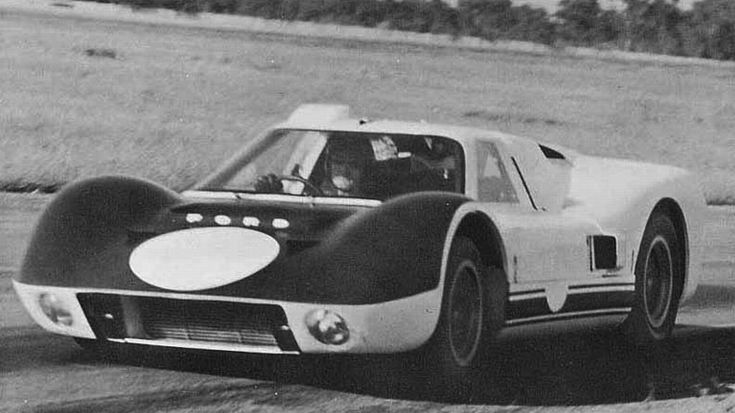
Chrysler’s mysterious “Patriot” Le Mans project from the early 1990s combined a gas turbine with flywheel energy storage. The technology was simply too advanced for its era, and the project was shelved despite promising test results.
The Rover-BRM gas turbine car competed at Le Mans in 1963 and 1965, achieving remarkable reliability. Despite finishing the race, the technology was deemed too expensive for production and faded into obscurity.
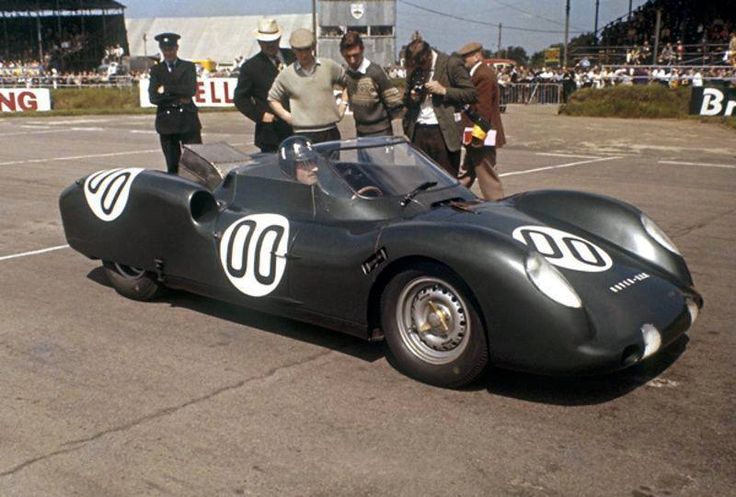

Forgotten Prototypes and Their Architects
The Chrysler Ghia concept that sank with the Andrea Doria in 1956 represents one of automotive history’s greatest losses. Designed by Italian coachbuilder Ghia, this one-of-a-kind prototype disappeared beneath the Atlantic, taking its innovations to the ocean floor.
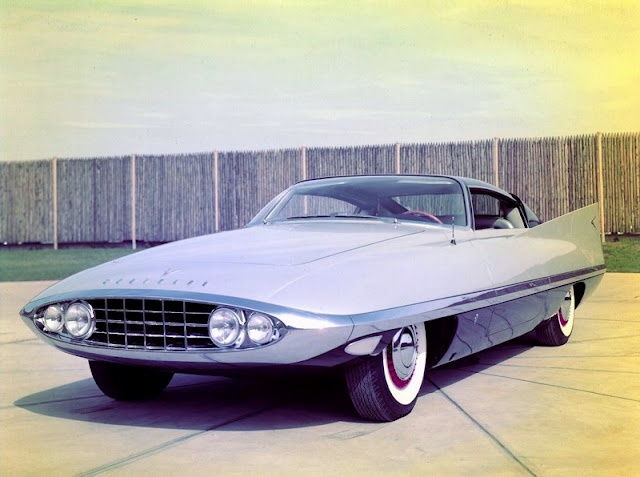
The 1935 Bugatti Type 57 Aérolithe stands as perhaps the most famous “lost car” in history. Built by Jean Bugatti himself, this magnesium-bodied masterpiece vanished during WWII. Its revolutionary aerodynamic design later influenced the iconic Atlantic models.
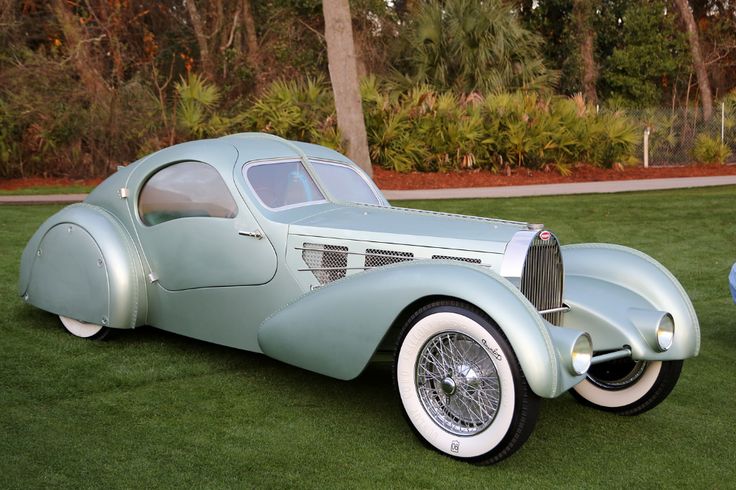
Several abandoned Cadillacs discovered in remote locations suggest forgotten test vehicles. These mysterious prototypes often contained experimental features never meant for public consumption, abandoned when project funding dried up.
The Influence of Social Media on Secret Car Reveals

Social media has transformed how automakers build excitement and control information about upcoming vehicles. Digital platforms now serve as the frontline for strategic reveals, replacing traditional auto shows as the primary venue for generating buzz around secret car projects.
Building Anticipation Through Mystery
Automakers carefully craft social media campaigns that reveal just enough to spark curiosity without exposing full details. Teaser images showing only silhouettes or close-ups of distinctive features are strategically released on platforms like Instagram and Twitter to build anticipation.
Ford’s 2021 Bronco revival campaign is a prime example. The company released shadowy images months before the full reveal, generating millions of impressions and thousands of speculative articles. This approach created a community of anticipation among potential buyers.

Digital and social media marketing strategies now include countdown timers, mysterious audio clips of engines, and pixelated glimpses that keep audiences engaged for weeks before official announcements.
Consent and Control in Information Sharing
Manufacturers face new challenges in maintaining secrecy in an era where anyone with a smartphone can become a whistleblower. Car companies now require stricter non-disclosure agreements from employees and test drivers to prevent unauthorized leaks.
Some brands have embraced controlled leaks as part of their strategy. These “accidental” reveals are often carefully orchestrated to gauge public reaction before official announcements.
Security measures have intensified as hackers and digital intrusions threaten confidential designs. Companies now employ digital security teams specifically focused on protecting intellectual property related to unreleased models.
The balance between revealing enough to generate excitement while maintaining the surprise element remains a delicate dance for marketing teams in today’s connected world.
Love Affairs with Iconic Automobiles

Automobiles often transcend mere transportation, becoming objects of deep emotional attachment and cultural significance. These mechanical marvels have inspired passion and devotion from enthusiasts and the general public alike.
Romancing the Wheel: The Allure of Exclusive Designs
Car enthusiasts develop profound connections with vehicles that embody beauty, power, and innovation. This emotional bond resembles a love affair – intense, personal, and sometimes irrational.
Porsche demonstrates this relationship perfectly through their extensive collection of historic vehicles. For over seven years, Porsche has maintained a dedicated storage facility housing rare and significant models that were previously scattered across multiple locations.
Similarly, the 1937-1942 Packard Darrin represents another passionate creation. Designer Dutch Darrin’s personality and vision shaped this iconic vehicle, transforming it from transportation into rolling art.
These relationships between creators and cars reveal how automobiles become embedded with human desires and emotions, making them cultural icons rather than mere machines.
The Ford Mustang GT3 Legacy
Ford’s Mustang GT3 exemplifies how passion drives automotive innovation and creates devoted followings. This racing variant builds upon the Mustang’s rich heritage while pushing performance boundaries.
The Mustang GT3 represents Ford Motor Company’s commitment to motorsport excellence and technological advancement. Its development involved countless hours of engineering refinement and testing to meet strict racing regulations.

Enthusiasts celebrate the Mustang GT3 for its:
- Race-bred aerodynamics
- High-revving 5.4-liter V8 engine
- Advanced carbon fiber construction
- Competition-ready suspension
Racing driver Tommy Kendall and automotive expert Jay Leno have discussed such passionate automotive relationships in The Love of Cars, highlighting how these vehicles inspire devotion among professionals and collectors.
Some Mustang GT3 prototypes remained hidden from public view for years before their official unveiling, creating legendary status among Ford enthusiasts who tracked their development through rumors and rare testing photographs.
Behind-the-Scenes: From Concept to Concrete

Secret car projects follow a fascinating path from initial sketches to fully realized prototypes, guided by talented but often unnamed individuals who shape automotive history from the shadows.
The Lifecycle of a Secret Car Project
Secret car projects begin as mere sketches on designers’ drawing boards or digital tablets. These ideas transform into small-scale clay models that engineers and designers refine through countless iterations.
Full-size clay mockups come next, allowing teams to evaluate proportions and styling in real space. This critical phase often determines whether a concept car continues development or faces cancellation.
Testing occurs in secure facilities with blacked-out windows and strict security protocols. Companies like Hyundai maintain dedicated design centers where concept cars take shape away from public eyes.
Some projects remain hidden for years. The secret Cadillac Coupe stayed concealed for six years before anyone outside the company knew it existed.
The Invisible Architects of Change
Behind every revolutionary car design stands a team of unsung architects of innovation. These individuals blend artistic vision with engineering prowess to create vehicles that push boundaries.
Design chiefs make crucial decisions that determine a concept’s fate. They balance creative ambition against production realities and corporate directives.
Engineers solve the seemingly impossible challenges presented by designers’ visions. Their technical expertise transforms bold ideas into functioning machines.
Test drivers provide critical feedback during development. Their input can dramatically alter a vehicle’s handling characteristics before the public ever sees it.
Many hidden project cars represent years of dedicated work by teams who receive little public recognition but whose creativity shapes the automobiles of tomorrow.
Cultural Influence: Cars in Film and Literature

Automobiles have transcended their mechanical purpose to become powerful symbols in our storytelling traditions, shaping how we perceive freedom, status, and adventure across media.
Hollywood’s Love for the Fast Lane
The relationship between cars and Hollywood began in early cinema and continues to define blockbusters today. From the Ford Model T in silent films to modern franchise giants, vehicles often become characters themselves.
Iconic Film Cars:
- The DeLorean from “Back to the Future”
- James Bond’s Aston Martin DB5
- The 1968 Ford Mustang GT in “Bullitt”
- Dom Toretto’s Dodge Charger in “Fast & Furious”
During filming, directors frequently emphasize automobiles as extensions of their characters’ personalities. Steve McQueen’s legendary car chase through San Francisco established a template that filmmakers still follow decades later.
Hollywood’s portrayal of cars has evolved from simple transportation to symbolic storytelling devices. The industry’s fascination with automotive narratives continues to influence how audiences view car ownership and driving culture worldwide.
Commemorating Automotive History in Reading
Literature has documented our complex relationship with automobiles since their invention. From Jack Kerouac’s “On the Road” to modern car enthusiast magazines, written works capture our automotive fascination.
New York publishing houses have released countless automotive histories, technical manuals, and fictional works centered on cars. The transition to digital formats has made this content more accessible, with ebooks allowing enthusiasts to build virtual libraries of automotive knowledge.
Contemporary authors continue exploring how cars shape American identity. They examine everything from road trip narratives to the environmental impact of car culture. Fiction writers often use specific vehicle models to establish character traits and socioeconomic status.
Cars in literature reflect broader cultural values about mobility, independence, and technological progress. Even as transportation evolves, the symbolic power of automobiles in our stories remains strong.
Enduring Legends: The Relationship Between Cars and Owners

Cars transcend their mechanical purpose to become integral parts of our life stories. They witness family milestones, offer freedom, and often develop personalities in the eyes of their owners.
When Driving Becomes More Than Transportation
For many enthusiasts, cars represent far more than simple mobility. The Lamborghini Miura exemplifies this deep connection, with owners describing almost spiritual experiences behind the wheel. What starts as appreciation for engineering can evolve into genuine emotional attachment.
Some owners name their vehicles, talk to them, and even apologize after accidents. This isn’t mere eccentricity but a reflection of the intimate relationship formed through thousands of shared miles.
The Bentley legacy demonstrates how cars become extensions of identity. Owners often cite feeling a sense of partnership with their vehicles rather than mere ownership.
The Compass of Family Bonds and Cars
Family vehicles quietly archive our most precious memories. The minivan that brought a newborn home, the sedan that transported children to college, all become repositories of shared experiences.
Many families pass vehicles through generations, transforming them into living heirlooms. The BMW 328 from the 1930s often appears at auctions with extensive documentation of family history, proving these machines transcend transportation to become family members.
Road trips in particular forge unique bonds. Families confined to the same space for hours develop traditions, inside jokes, and memories that last lifetimes. The family car serves as both compass and witness to life’s journey.
Future Forward: Next-Generation Secret Projects

Automakers continue to develop cutting-edge concept vehicles behind closed doors that might revolutionize the transportation landscape. These confidential projects combine visionary design with technological innovation that push boundaries beyond what consumers currently imagine possible.
Forecasting the Revolution of the Automobile
The future of secret automotive projects lies in sustainability and autonomy. Major manufacturers have hidden facilities where architect-led teams work on vehicles that reimagine transportation fundamentals. Many of these concept cars integrate flying capabilities – a dream since before the Jetsons era.
Tesla reportedly maintains a classified division exploring solid-state battery technology that could triple current range capabilities. This technology remains under tight security protocols.
Japanese manufacturers like Toyota continue the tradition of pioneers such as Smokey Nagata, whose Top Secret fleet demonstrated boundary-pushing possibilities. Their current classified hydrogen-electric hybrid platforms could redefine efficiency standards.
European brands focus on urban mobility solutions with autonomous pods that communicate with smart city infrastructure. These vehicles can transform between personal and public transportation modes.
The Role of Cutting-Edge Technology in Concept Creation
Advanced AI systems now serve as collaborative design partners in secret vehicle development. Computer algorithms generate thousands of potential designs based on specific parameters that human designers then refine.
Virtual testing environments allow engineers to simulate decades of road conditions before building physical prototypes. This reduces development time from years to months.
Porsche’s Vision Turismo project demonstrates how concept explorations evolve. What began as a mid-engine sports car with four doors transformed into something entirely different.
Biomimicry plays a crucial role in next-generation vehicles. Engineers study natural structures to design lighter, stronger components. One classified project reportedly incorporates self-healing exterior panels inspired by human skin.
Top secret automotive projects often involve interdisciplinary teams including aerospace engineers, material scientists, and even behavioral psychologists who collectively shatter perceptions of what’s possible.
Vehicles in the Shadows: Notable Mentions

The automotive world has its share of mystery vehicles that almost changed history. These forgotten gems were developed behind closed doors, with only a few people knowing they existed.
Honda once had a top-secret project where four engineers worked in complete privacy. This initiative was so classified that even within the company, few knew about it. Their work might have revolutionized how we think about cars today.
In Japan, the car scene holds many untold stories. Hidden among the well-known models like the Nissan Silvia S14.3 are vehicles that were developed but never reached production. These cars represent bold ideas that were ahead of their time.
Some concept cars were so revolutionary they could have reshaped the entire industry. These hidden gems of automotive history tell the story of innovation that never reached the public.
In New York, there exists an incredible collection of rare vehicles hidden behind a secret door. This private showcase contains prototypes and one-offs that car enthusiasts would be amazed to discover.
The five most significant automotive secret projects include vehicles developed by major manufacturers taking risks outside their comfort zones. These bold experiments reflect moments when companies nearly took dramatic new directions.
Experts and Enthusiasts: The Silent Guardians of Car Lore

Behind every secret automotive project lives a community of dedicated individuals who preserve these stories through knowledge and passion. They ensure these nearly-forgotten vehicles maintain their place in automotive history.
Physicians of the Automotive World
Restoration experts act as true physicians to forgotten prototype vehicles, diagnosing problems and bringing mechanical ghosts back to life. These specialists possess unique knowledge that manufacturers often lack, especially for abandoned projects that never reached production.
Their workshops become operating rooms where they carefully disassemble, document, and rebuild what might have been lost forever. Using period-correct tools and techniques, they navigate without modern compasses of computer diagnostics or manufacturer support.
Many work in small teams, passing knowledge through apprenticeships rather than formal education. Their detailed documentation often becomes the only reliable record of how these secret prototypes were constructed.
Some become specialized in particular eras or manufacturers, developing expertise in obscure systems that only appeared on a handful of prototype vehicles.
The Unseen Influence of Passionate Collectors
Private collectors form the backbone of automotive preservation, driven by love rather than profit. They invest millions to acquire and maintain prototype vehicles that nearly changed history.
Many collectors work anonymously, allowing their cars to appear at exhibitions without revealing ownership. Their passion ensures these automotive stories remain alive for future generations to appreciate.
Some dedicate entire facilities to preserving singular concepts that manufacturers abandoned. Without these enthusiasts, many revolutionary designs would exist only in faded photographs or technical drawings.
Collectors often collaborate with historians to document the complete development story behind each vehicle. They meticulously gather original blueprints, designer notes, and interview former project team members before these primary sources disappear.
Their private archives frequently contain more comprehensive records than the manufacturers themselves maintain.
Beyond ‘Go Like Hell’: Untold Secret Car Sagas

While “Go Like Hell” chronicles Ford’s battle against Ferrari at Le Mans, many other secret automotive projects remain hidden from public knowledge. Ford Motor Company developed several classified vehicles that never reached production lines.
In 1968, Ford engineers worked on “Project Phoenix,” a mid-engine supercar designed to dominate European racing circuits. The project was shelved when cost projections doubled during development.

Another fascinating story involves Ford’s “Stealth Fighter” – a 1972 experimental vehicle using radar-absorbing materials. Military applications seemed promising, but technical challenges proved insurmountable.

Secret Le Mans Prototypes:
- “Thunderbird GT” (1965) – Canceled two months before race day
- “Cobra II Special” (1966) – Testing accident destroyed only prototype
- “Mach 1” (1970) – Too advanced for production technology



Ford’s “Moonshot Division” operated from 1964-1973 with its own facility. Their boldest concept was a turbine-powered family car that could reach 200 mph while achieving 28 mpg.
The “Le Mans Alternative” project explored non-traditional powertrains for endurance racing. Ford tested hydrogen fuel cells in 1969, decades before they became viable.
Not all secret projects aimed for speed. The 1966 “Silent Runner” developed noise-reduction technology that later appeared in luxury vehicles.
These untold stories reveal how automotive innovation often happens beyond public view, with many revolutionary ideas dying in prototype stages.
Frequently Asked Questions

The automotive industry has harbored numerous secret projects that nearly revolutionized car design and technology. These hidden developments often reveal fascinating stories of innovation, corporate decision-making, and market forces.
What are some notable car projects that were canceled before going into production?
The Studebaker Avanti was a groundbreaking vehicle designed to save the struggling company. Though it briefly made it to production as the world’s fastest production car, financial troubles prevented it from reaching its full market potential.
Ford’s Mach 2 concept from the late 1960s was another promising project that never reached consumers. This mid-engine sports car would have challenged Corvette directly but was shelved due to budget constraints.
Chrysler’s ME Four-Twelve supercar prototype from 2004 featured a quad-turbo V12 engine producing over 850 horsepower. Despite impressive performance metrics, production costs ultimately doomed this potential halo car.
Can you name a few innovative features introduced in secret car projects that were never released?
General Motors developed an early hybrid drivetrain system in the 1990s that was significantly ahead of its time. The technology was deemed too expensive for mass production but pioneered concepts later used in production hybrids.
Rotary-powered Corvette prototypes explored alternative engine configurations that would have dramatically changed the car’s character. These experiments helped engineers understand balance trade-offs even though they weren’t implemented.
Early autonomous driving systems were tested by Mercedes-Benz in the 1980s using primitive computer vision. While these specific implementations never reached production, they established important foundational research.
How have hidden automotive developments impacted the evolution of modern vehicles?
Failed experimental safety features often resurface in refined forms years later. Early automatic braking systems that weren’t ready for production eventually evolved into today’s standard emergency braking technology.
Aerodynamic research conducted in secret has transformed vehicle design. Wind tunnel testing of radical body shapes that weren’t consumer-ready provided data that gradually influenced production vehicle profiles.
Material science experiments with carbon fiber and other composites initially deemed too expensive have slowly entered mainstream production as manufacturing costs decreased.
What factors contribute to car manufacturers deciding to keep certain projects concealed or eventually scrap them?
Financial viability remains the primary factor in project cancellations. When development costs exceed projected returns, even promising innovations get shelved regardless of their technical merit.
Market timing plays a crucial role in project secrecy. Companies often develop technologies years before consumers are ready to accept them, requiring careful management of public perception.
Competitive advantage drives secrecy in automotive development. Manufacturers hide breakthroughs to prevent competitors from copying innovations before patents can be secured.
Corporate leadership changes frequently kill ongoing projects. New executives often prioritize different strategies, abandoning previous work regardless of its potential.
Are there instances where once-secret car projects have been revealed to the public many years later?
The Ford Pinto development process remained largely hidden until years after production ended. Internal documents later revealed the controversial cost-benefit analysis regarding safety improvements.
Porsche’s 989 four-door prototype from the 1980s remained virtually unknown until decades later. This concept eventually influenced the Panamera, which launched in 2009.
GM’s EV1 program included numerous unpublicized variants and test vehicles that were only revealed years after the program ended. These included longer-range battery prototypes that were ahead of their time.
How do car companies protect the secrecy of their internal project developments?
Manufacturers use code names for all sensitive projects. These arbitrary designations prevent outsiders from understanding a project’s purpose even if they hear it mentioned.
Isolated testing facilities in remote locations allow companies to evaluate prototypes away from public view. These secure compounds often feature private test tracks and specialized equipment.
Camouflage and disguise techniques mask the appearance of test vehicles when they must be driven on public roads. Distorted body panels and visual deception hide key design elements.
Employee non-disclosure agreements create legal consequences for revealing confidential information. These contracts typically extend beyond employment periods to protect long-term secrets.

